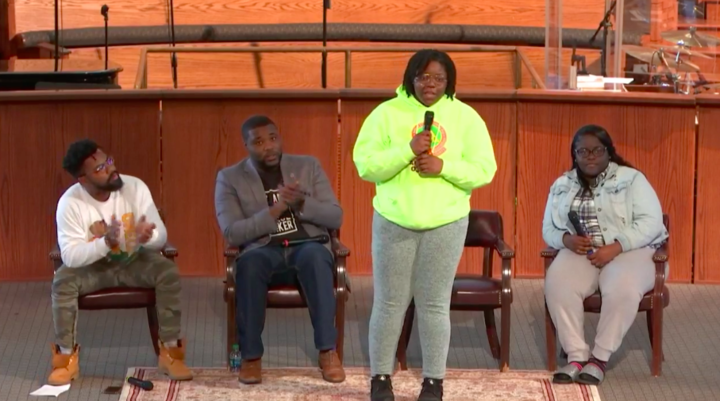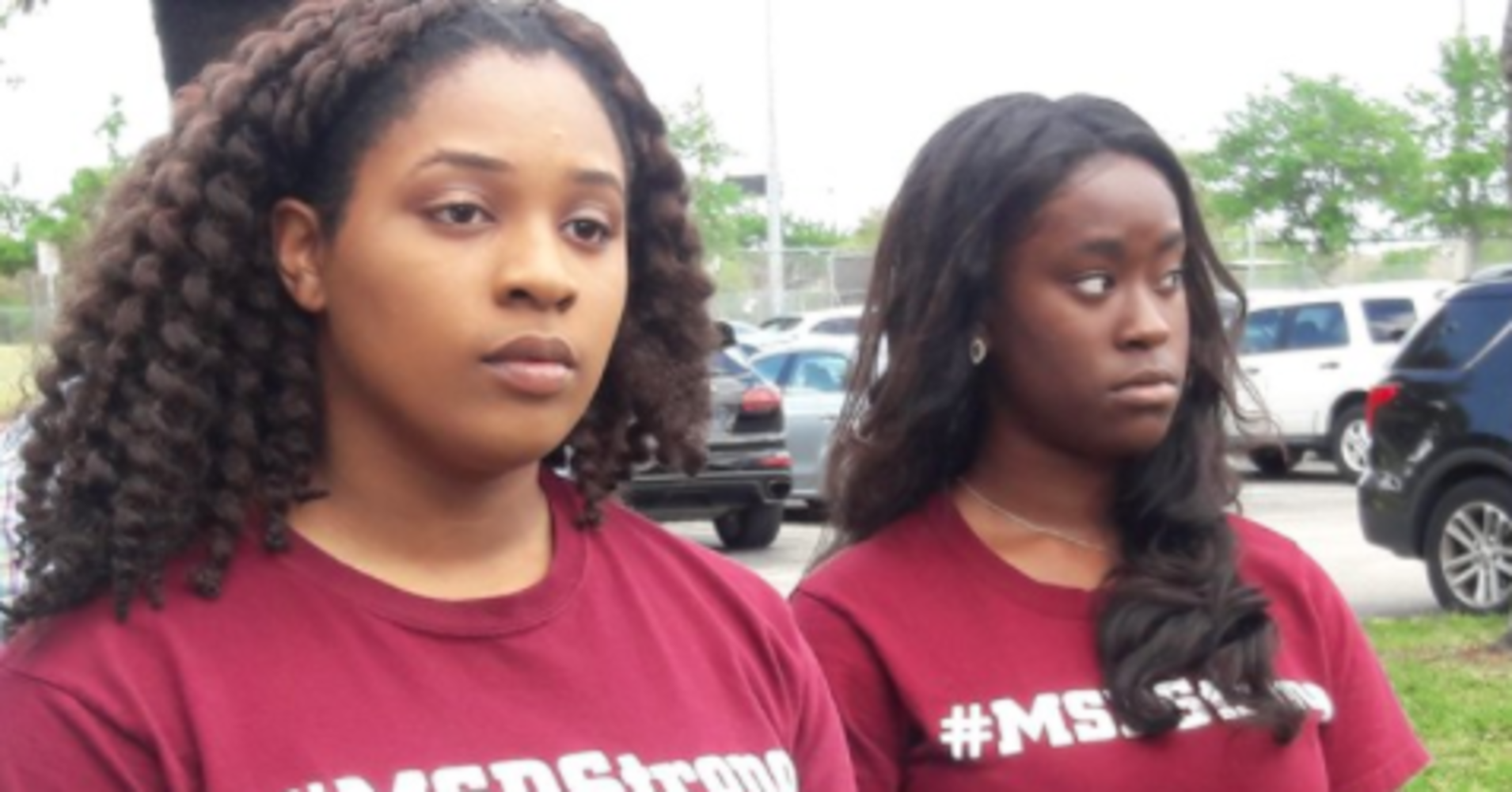[ad_1]
Black students at Marjory Stoneman Douglas High School are calling out the March for Our Lives movement ― at once commending the teens leading it for their efforts to be inclusive and pushing them to go a step further by sharing the spotlight with their own black peers.
“We’re saying you don’t see much of us at the forefront,” 17-year-old junior Mei-Ling Ho-Shing, who is black, told HuffPost earlier this week.
Ho-Shing’s classmates at the front of the student-led anti-gun violence movement, like David Hogg and Emma González, have been rightfully celebrated for their moves toward inclusivity. They’ve met with young activists of color from communities where gun violence is more pervasive, featured a diverse array of speakers at their rally in D.C., and used their massive Twitter platforms to highlight issues like black communities being disproportionately affected by gun violence. In many ways, they mark a new generation of activists aiming to be fiercely intersectional.
Still, some black students at the school in Parkland, Florida, where a gunman killed 17 people in February, contend that the student activists haven’t quite practiced this inclusivity in their own backyards, and have not gone far enough to include black teens from their own school, and nearby areas where gun violence is more prevalent, at the center of their movement.
“It hurts, because they went all the way to Chicago to hear these voices when we’re right here,” Ho-Shing said, referring to a gathering last month where March for Our Lives leaders met with teens of color from a Chicago school to discuss gun violence. “We go to school with you every day.”
While nearly 40 percent of Marjory Stoneman Douglas High School’s 3,000 or so students are nonwhite, including 11 percent who are black, the students at the forefront of the March for Our Lives ― and those getting most media attention ― are largely nonblack, including David Hogg and Cameron Kasky, who are white, and Emma González, who is Latina.
“David Hogg, we’re proud of him, but he mentioned he was going to use his white privilege to be the voice for black communities, and we’re kind of sitting there like, ‘You know there are Stoneman Douglas students who could be that voice,’” Ho-Shing told HuffPost.
At a press conference last week, around half a dozen black students from the high school, including Ho-Shing, gathered to say that the media and their peers weren’t sufficiently hearing their perspectives.
“We feel like people within the movement have definitely addressed racial disparity, but haven’t adequately taken action to counteract that racial disparity,” Tyah-Amoy Roberts, a junior who also spoke at the press conference, told Refinery29. She noted that March for Our Lives leaders had not invited her to meetings. “They’ve been saying, but they haven’t been doing,” she said.
After last week’s press conference, Ho-Shing said González had reached out to talk, but as of earlier this week, there were still no specific plans to meet, exchange ideas or join forces.
HuffPost reached out to March for Our Lives, but did not receive a response as of this posting.
Black students at Stoneman Douglas have a key perspective to add to the March For Our Lives movement, partly because many of them don’t live in the largely white, affluent and safe area around the school, Ho-Shing noted. In many cases, they have intimate connections, through family and friends, with communities of color that more commonly suffer from gun violence.
“The problem [is] with having the leadership at the forefront having the same experience growing up in a neighborhood that’s safe and wealthy, where gun violence is not,” said Ho-Shing, who lives in the nearby town of Coconut Creek, where the median household income is less than half that of Parkland’s. While she hasn’t experienced gun violence herself, she has family and grew up going to church in nearby North Lauderdale, where it is a significant issue.
“We just want to share the mic,” she added.
Ho-Shing and her peers of color also recognize their own relative privilege as teens attending a school that has gotten significant public attention, as well as resources like therapy dogs and social workers, since the shooting. They are hoping to extend their platform to other black and brown teens in surrounding areas, like Miami’s Liberty City, who face gun violence on a more regular basis.
“We’re unlucky that this happened to us, but … we’re only experts of Feb. 14, in fourth period,” Ho-Shing said, referring to the time of the Parkland shooting. “Our friends and family at other schools are scared, and maybe only have one social worker. We can’t sit there and listen to that and be OK with it.”

Ho-Shing and others say the news media has played a significant role in elevating the platforms of the largely nonblack leaders of March for Our Lives while leaving out the voices of their black peers. She noted that major news features, like the Time Magazine cover or “60 Minutes” interview, had not included black students.
“You can’t blame them for how big they got,” Ho-Shing said of her now-famous peers. “We’re definitely going to start talking to them, because this is not a divisive thing.”
While Ho-Shing felt it was a shame that black students had needed a press conference to be heard by media and the movement leaders at their school, she was confident her peers would be more inclusive moving forward.
“At the end of the day, we’re all fighting the same thing,” Ho-Shing said. “Black Lives Matter, March for Our Lives ― we’re all fighting gun violence, point blank, period.”
[ad_2]
Source link

